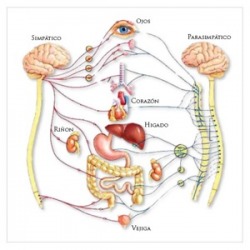Chiropractic Concept
Nervous system interference is the most common cause of disease
 According to the medical book Gray Anatomy "the role of the nervous system is to control and coordinate ALL the functions of the body and adapt the individual to their environment."
According to the medical book Gray Anatomy "the role of the nervous system is to control and coordinate ALL the functions of the body and adapt the individual to their environment."
Your nervous system is the master that directs all the functions of your body. Your level of functioning or health depends directly on the proper functioning of your nervous system, so the relationship between the system, the nervous system and health is close.
For everything to work properly we must look at the spinal column, which contains and protects the spinal cord and the nerves that go to all parts of the body must have a perfect alignment. The spine is made up of the vertebrae, mobile segments that under certain circumstances can lose their normal alignment and irritate the nervous system.
These imbalances, called subluxations, are usually the main cause of pain or poor function suffered by the individual. A healthy spinal column is essential for good health.
If you want to regain or avoid losing your health, make sure that your nervous system controls well all the functions of your body, and that there are no interferences in its functioning, since the altered nervous energy caused by the pressure and irritation of the oppressed nerves , create toxicity and stress, leading to malfunction and disease.
On the other hand, we must take into account that genetic, nutritional factors and even air quality, among others, are agents that also influence health.
To eliminate nerve interferences and restore health: specific adjustments
Only a precise and specific adjustment can correct subluxation (vertebral misalignment), and eliminate neurological interferences, and thus help the body to self-heal. Massages, heat, gymnastics, although possibly useful, as they calm the pain, cannot correct the vertebral subluxation, it is impossible for them to reposition the displaced vertebra.
The vertebral adjustment performed by chiropractic doctors uses a very specific, controlled force in one direction applied to a vertebra that allows the patient's body to use this force to make its own correction.
This procedure improves vertebral mechanics, restores a normal transmission of the nervous influx in quantity and quality, and improves health.
The adjustment should not be confused with manipulation or any other therapy such as mobilization or massage.